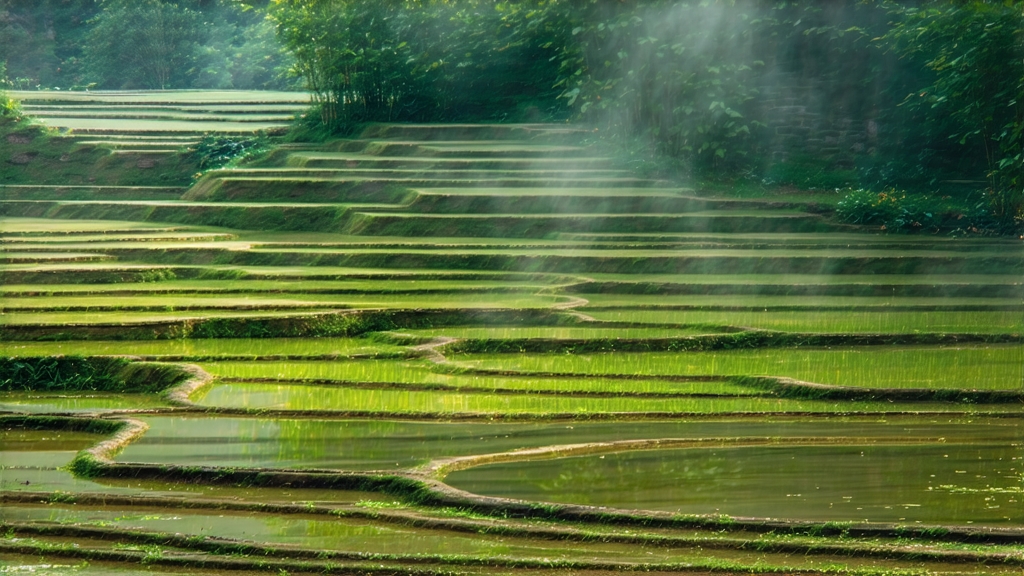
Tucked high on the mist-capped Meng Ding Mountain in Sichuan Province, a tea once reserved for emperors still awakens each spring under veils of cloud and pine. Meng Ding Huang Ya—literally “Meng Ding Yellow Bud”—is the least exported yet most aristocratic member of China’s micro-category of yellow teas. While green tea is celebrated for its freshness and pu-erh for its ageability, yellow tea occupies a hushed middle realm: it is gently oxidized after fixation, then “sealed” in a slow, humid smothering that turns leaf and liquor the color of pale champagne. The result is a cup that tastes like mountain air translated into silk—soft, orchid-sweet, and lingering with a faint maillard nuttiness that can appear only when time, moisture and artisanal intuition align.
Historical whispers place Meng Ding Huang Ya at the Tang court (7th century CE), but firm tribute records begin in Song-dynasty annals of 1186 CE, when monk-tea masters presented “small-bud yellow tablet tea” to Emperor Xiaozong. The mountain’s Ganlu Temple—named after the “Sweet Dew” that a 1st-century Buddhist missionary is said to have dripped from a stone—controlled the gardens, plucking only the dew-bright buds on the first three rain-free mornings after the Qingming festival. Any leaf picked later, or touched by iron tools, was rejected for fear it would “rust” the subtle yellowing chemistry. By Ming times the tea vanished from palace menus when green tea fashions surged, and yellowing skills retreated into family lineages. A 1959 government survey rediscovered three octogenarian monks who still remembered the wrapped-swelter technique; their handwritten notes became the blueprint for the state-run Meng Ding Tea Farm revival that now produces fewer than three tons a year, 70 % of which is air-freighted to Beijing’s Zhongnanhai leadership compound. What trickles abroad is usually snapped up by specialty auction houses in Hong Kong or Paris, making authentic Meng Ding Huang Ya rarer per gram than first-flush Darjeeling.
The cultivar itself is a local Sichuan shrub first classified in 1958 as Camellia sinensis var. mengdingensis. Its leaves are micro- pubescent, storing more amino acids than the broader-leaf assamica hybrids downstream in Yibin. Two grades enter commerce: Ming-qian “Sparrow Tongue,” consisting of unopened buds no longer than 2.2 cm, and Yu-qian “Gold Tablet,” which keeps the first leaf just unfolded and is pressed into 7 g mini-cakes for modern gift culture. Both grades must be picked before 10 a.m., when mountain humidity is 78–82 % and leaf temperature stays below 18 °C, preserving the short-chain floral volatiles that survive the yellowing step.
Crafting Meng Ding Huang Ya is a four-day choreography of heat, moisture and stillness. Step 1, “killing the green,” is done in woks set to 160 °C for 90 seconds—just long enough to denature polyphenol oxidase while keeping 12 % internal moisture. The master’s bare hand presses the buds against the iron, judging by ear: a sharp sesame-seed pop means the pan is too hot; a muffled whisper signals readiness. Step 2, the preliminary roll, lasts only eight minutes; the goal is to bruise epidermal cells so that stem moisture can migrate outward without breaking the bud silhouette. Step 3 is the yellowing hallmark: buds are piled 3 cm deep in bamboo trays, covered with wet linen, and left in a 28 °C, 85 % humidity chamber for 48 hours. Every six hours the pile is gently turned to equalize heat; the leaf slowly suffocates, chlorophyll degrades into pheophytin, and catechins dimerize into theaflavins that tint the future liquor gold. A nutty, almost steamed-bread note emerges—Chinese tasters call it “gao-xiang,” cake-fragrance. Step 4 is the low-temperature bake: 60 °C for three hours, reducing moisture to 5 % while caramelizing free sugars. When finished, the bud should snap like fresh asparagus and smell of magnolia with a trace of roasted soybean.
Storage